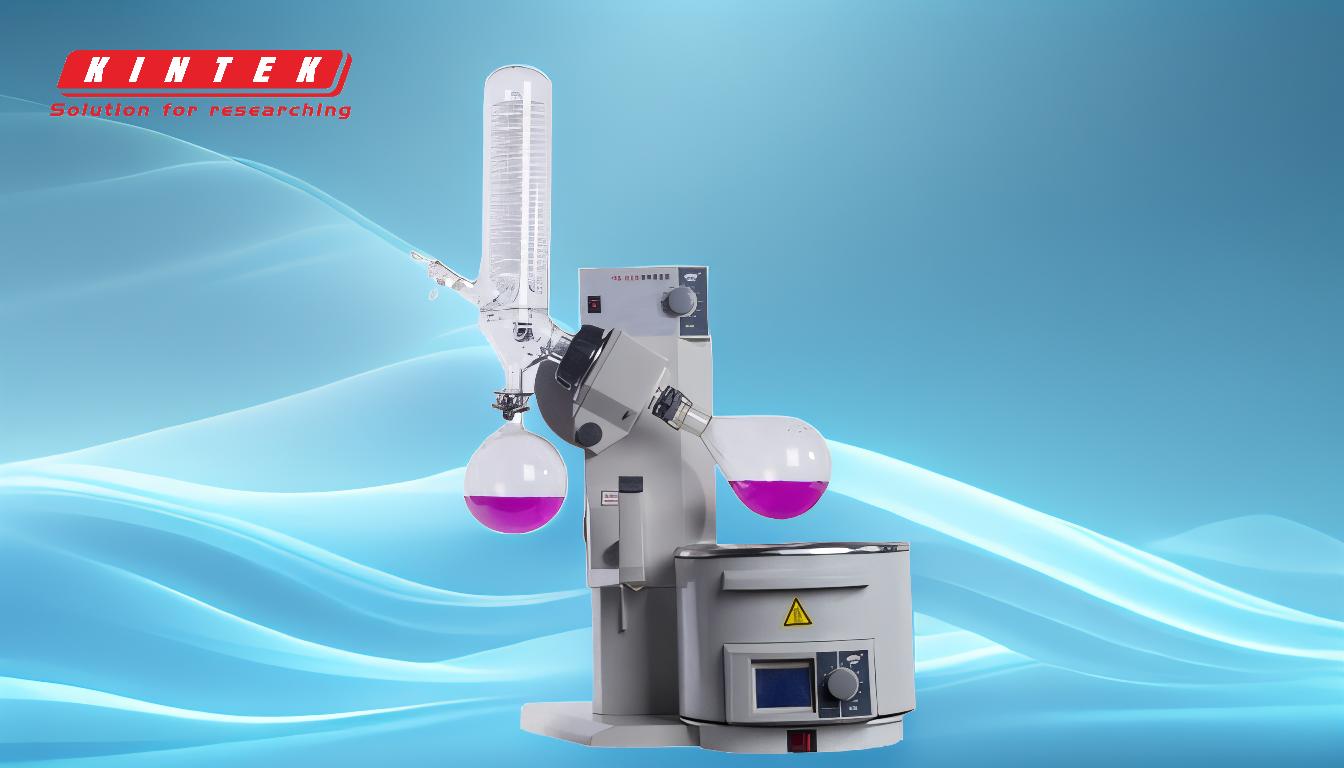Rotary evaporators are widely used in laboratories and industries for solvent removal, concentration, and purification processes. However, there are alternatives that can be employed depending on the specific requirements of the application. Two notable alternatives are the Falling Film Evaporator and the Wiped Film Evaporator. These systems offer unique advantages and are suitable for different types of evaporation tasks. Below, we explore these alternatives in detail, focusing on their operating principles, applications, and how they compare to rotary evaporators.
Key Points Explained:

-
Falling Film Evaporator:
- Operating Principle: The Falling Film Evaporator operates similarly to a Vertical Shell & Tube Heat Exchanger. In this system, the liquid to be evaporated is distributed evenly over the inner surface of vertical tubes. As the liquid flows downward, it forms a thin film. Heat is applied externally, typically through steam or another heating medium, causing the liquid to evaporate. The vapor is then separated from the remaining liquid.
- Applications: This type of evaporator is particularly effective for heat-sensitive materials, as the short residence time minimizes thermal degradation. It is commonly used in the food, pharmaceutical, and chemical industries for concentrating fruit juices, milk, and other sensitive products.
-
Advantages:
- High heat transfer efficiency due to the large surface area of the thin film.
- Suitable for continuous operation, making it ideal for large-scale industrial applications.
- Minimal thermal degradation of heat-sensitive materials.
-
Limitations:
- Requires precise control of liquid distribution to ensure even film formation.
- Not suitable for highly viscous liquids, as they may not form a uniform film.
-
Wiped Film Evaporator:
- Operating Principle: The Wiped Film Evaporator works on the principle of thermal separation in a thin, turbulent liquid film. The liquid is spread into a thin film on the inner surface of a heated cylindrical vessel. Rotating wipers or blades continuously agitate the liquid, ensuring uniform distribution and enhancing heat transfer. The evaporation occurs as the liquid film moves downward, and the vapor is separated from the liquid.
- Applications: This evaporator is ideal for handling viscous, heat-sensitive, or fouling-prone materials. It is widely used in the chemical, pharmaceutical, and food industries for processes such as distillation, concentration, and solvent recovery.
-
Advantages:
- Excellent for handling viscous and heat-sensitive materials.
- High evaporation rates due to the continuous agitation and thin film formation.
- Reduced fouling and scaling due to the constant movement of the wipers.
-
Limitations:
- Higher initial cost and maintenance due to the mechanical complexity of the wiper system.
- Limited to smaller-scale operations compared to some other evaporator types.
-
Comparison with Rotary Evaporators:
- Scale of Operation: Rotary evaporators are typically used in laboratory settings or small-scale industrial applications. In contrast, Falling Film and Wiped Film Evaporators are more suited for larger-scale industrial processes.
- Material Suitability: Rotary evaporators are versatile and can handle a wide range of solvents and materials. However, for highly viscous or heat-sensitive materials, Wiped Film Evaporators may offer better performance.
- Operational Complexity: Rotary evaporators are relatively simple to operate and maintain. Falling Film and Wiped Film Evaporators, while more efficient for certain applications, require more sophisticated control systems and maintenance.
- Cost: Rotary evaporators are generally more cost-effective for small-scale applications. Falling Film and Wiped Film Evaporators, with their higher efficiency and capacity, are more expensive but can be more economical for large-scale operations.
In summary, while rotary evaporators are a staple in many laboratories, the Falling Film Evaporator and Wiped Film Evaporator offer compelling alternatives for specific applications, particularly in industrial settings. The choice between these alternatives depends on factors such as the scale of operation, the nature of the materials being processed, and the desired efficiency and cost-effectiveness.
Summary Table:
| Feature | Falling Film Evaporator | Wiped Film Evaporator | Rotary Evaporator |
|---|---|---|---|
| Operating Principle | Thin film evaporation in vertical tubes | Thin film evaporation with rotating wipers | Rotating flask with heat and vacuum |
| Applications | Heat-sensitive materials, food, pharmaceuticals | Viscous, heat-sensitive, fouling-prone materials | Solvent removal, concentration in labs |
| Advantages | High heat transfer, minimal thermal degradation | Handles viscous materials, high evaporation rates | Versatile, cost-effective for small-scale |
| Limitations | Not suitable for viscous liquids | Higher cost, complex maintenance | Limited to small-scale operations |
| Best For | Large-scale industrial applications | Industrial applications with complex materials | Laboratory and small-scale processes |
Need help choosing the right evaporator for your application? Contact our experts today for personalized advice!














